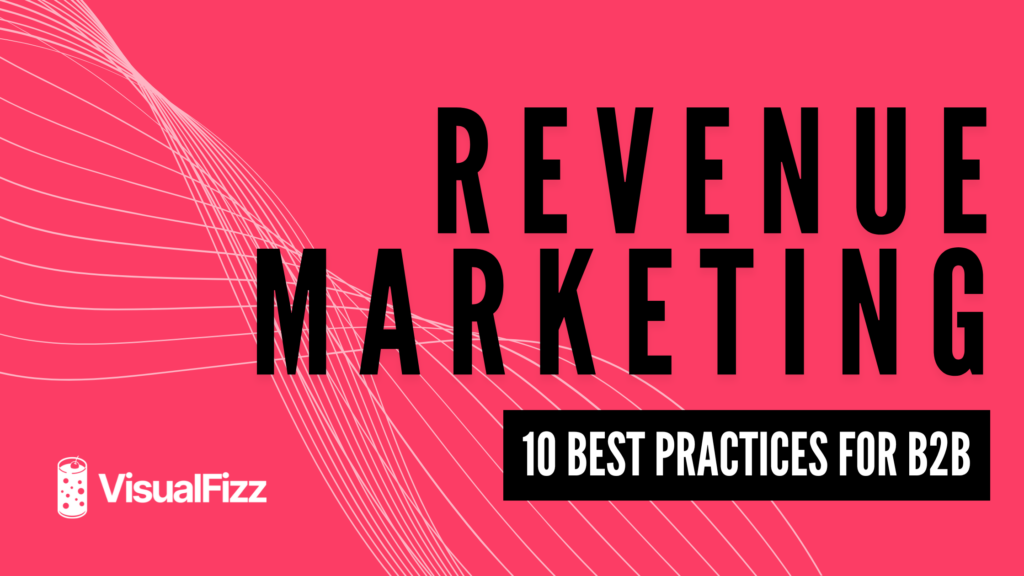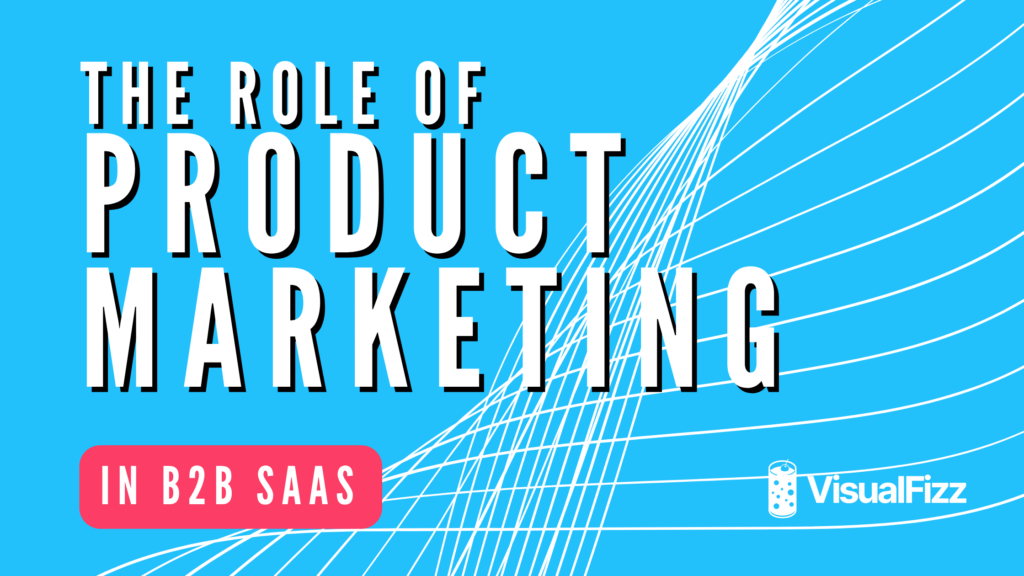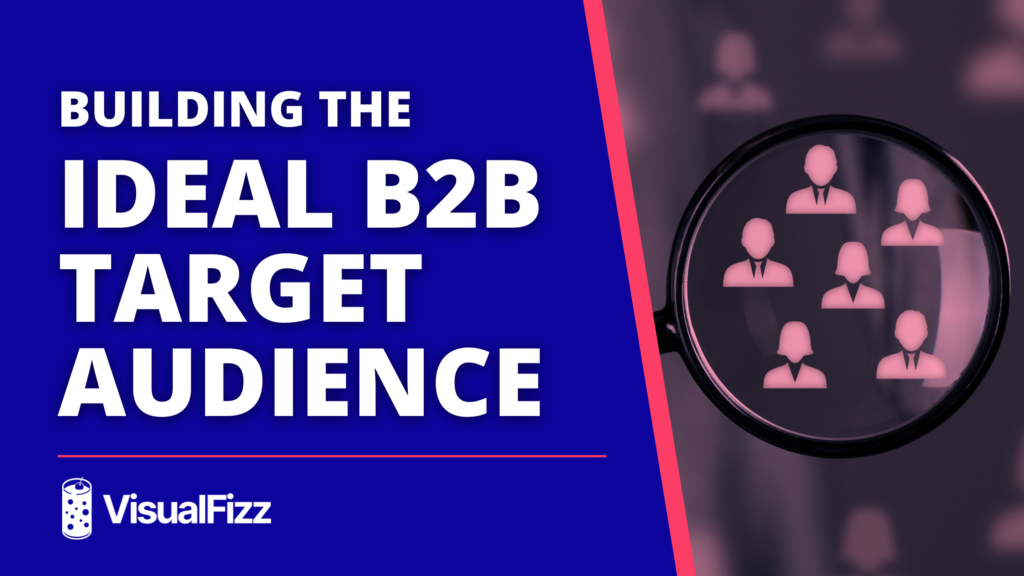
Your marketing team is celebrating a successful campaign with thousands of new leads—but the sales team is still struggling to close deals, and revenue growth hasn’t budged. Sound familiar? It’s a common scenario in B2B businesses where marketing and sales struggle to work together. However, there is a solution— revenue marketing. This data-driven approach helps all teams get together to achieve tangible revenue outcomes.
Consider Drift as an example. This marketing platform disrupted traditional B2B lead generation by focusing on real-time engagement. By integrating chatbots, personalized outreach, and analytics, Drift empowered businesses to shorten sales cycles and boost conversions. Their approach to aligning marketing with revenue objectives turned the old playbook on its head.
Companies that embrace revenue marketing see results. And at VisualFizz, we want to help you achieve those B2B results. Let’s break down what revenue marketing is, why it matters, and how you can implement it in your business model.
What Is Revenue Marketing?
Revenue marketing is an approach that ties marketing efforts directly to revenue generation. It moves beyond traditional metrics like website visits and leads generated, focusing instead on the bottom line. The goal is to create campaigns and initiatives that not only attract prospects but also nurture them through the sales funnel and drive measurable business growth.
Unlike traditional marketing, revenue marketing requires close collaboration between marketing, sales, and customer success teams. It leverages data and technology to provide the full and unobstructed view of the customer journey, enabling smarter decision-making and better resource allocation.
Why Revenue Marketing Matters in B2B
Revenue marketing ensures that every effort—from content creation to sales enablement—is optimized to support the buying process.
For example, companies using revenue marketing frameworks like account-based marketing (ABM) have reported significant gains. ABM programs generate 208% more revenue for B2B companies than traditional marketing methods. By focusing on high-value accounts and aligning marketing efforts with sales objectives, businesses can drive more impactful results.
Best Practices for Implementing Revenue Marketing
1. Get Marketing and Sales Teams Working Together
Revenue marketing begins with alignment. Establish shared goals. Regular meetings and shared KPIs ensure both teams are working toward the same outcomes.
For example, companies using CRM platforms like HubSpot or Salesforce can integrate sales and marketing efforts to track progress in real time. This collaboration creates a seamless handoff of leads, reducing friction and ensuring no opportunities slip through the cracks.
2. Invest in the Right Technology
Revenue marketing relies heavily on data and analytics, making marketing technology (MarTech) essential.
That means predictive analytics tools can help identify high-value prospects and forecast their likelihood of conversion. This allows marketing teams to focus resources on the accounts most likely to drive revenue.
3. Focus on the Entire Customer Journey
Revenue marketing doesn’t stop at lead generation—it extends through the entire customer lifecycle. This means creating content and campaigns that address every stage of the buyer’s journey.
A great example is Dropbox Business, which uses onboarding campaigns to educate new users, increasing retention and upsell opportunities.
4. Use Account-Based Marketing (ABM)
ABM can revamp revenue marketing strategies. By focusing on specific high-value accounts, marketing and sales can work together to deliver personalized experiences that drive engagement and conversions.
In fact, 87% of B2B marketers say ABM delivers a higher ROI than any other marketing strategy. It’s all about personalization so each account feels valued and understood.
5. Measure What Matters
Traditional marketing metrics like clicks and impressions are useful. But it’s not enough to truly focus your revenue marketing. Instead, find the metrics that directly impact revenue, such as customer lifetime value (CLV), deal velocity, and pipeline contribution.
6. Prioritize Customer Retention and Expansion
While you always need new customers, revenue marketing is all about maximizing the value of your existing customer base. Research from Bain & Company shows that increasing customer retention rates by just 5% can boost profits by 25% to 95%.
Focus on strategies like upselling, cross-selling, and personalized engagement to expand existing accounts. For instance, a B2B software company might create targeted email campaigns highlighting advanced features or upgrades tailored to specific customer needs. Loyal customers are not only more likely to spend more—they’re also your best advocates, helping to generate referrals and positive word-of-mouth.
7. Create Scalable Campaigns for Growth
To drive sustainable revenue growth, your campaigns must scale alongside your business. This means leveraging automation tools, standardized processes, and modular content that can be easily customized for different audience segments or different markets.
For example, a global B2B enterprise might use marketing automation to roll out region-specific campaigns while maintaining consistency in messaging and branding. Scalable campaigns save time and resources.
8. Build a Culture of Alignment Across Teams
Revenue marketing thrives when marketing, sales, and customer success teams work together. Fostering a culture of collaboration is what truly drives results. Encourage regular cross-departmental meetings, shared ownership of KPIs, and open channels of communication.
9. Embrace Experimentation and Agility
Revenue marketing requires a willingness to experiment. Testing different approaches, such as new content formats, campaign types, or audience segments, helps identify what works and refine what doesn’t.
Tools like A/B testing and predictive analytics empower teams to optimize their strategies in real-time. For instance, experimenting with LinkedIn ads targeting niche industries may reveal untapped opportunities, allowing you to double down on campaigns that yield the highest ROI. Agility is a MUST—stay flexible and let the data guide your next move.
10. Invest in Education
Investing in ongoing education—through certifications, workshops, or industry conferences—keeps marketing and sales teams stay ahead of the curve.
For example, enrolling team members in certifications like Google Analytics, HubSpot Academy, or Salesforce training can equip them with the expertise to maximize the value of your technology stack.
Take These Best Practices and Put Them Into Practice
Revenue marketing is a proven framework for driving growth in the B2B space. At VisualFizz, we specialize in creating data-driven marketing strategies that fuel business growth. Contact us today to learn how we can help you implement revenue marketing best practices.
Publishing Date:







